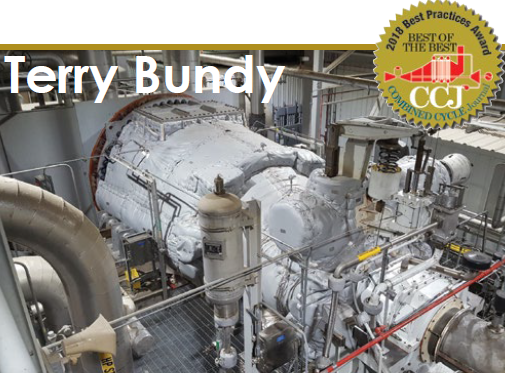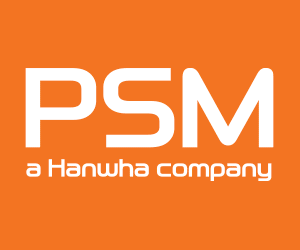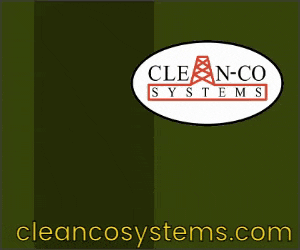
Recognized for its Best Practice in Performance Improvement
Steam-turbine rotor/case upgrades and heating system extend outage intervals
Lincoln Electric System’s Terry Bundy Generating Station is dispatched primarily to address peaks in the SPP market, resulting in daily on/off cycling. In 2016, the steam-turbine OEM significantly increased the equivalent operating-hour (EOH) factor for cold starts on the plant’s 2 × 1 combined cycle. The new cold-start EOH factor would have required major inspection/maintenance cycles for the steamer every seven years, costing more than $7.6 million over the next 25 years.
Staff evaluated the benefits of reducing the number of “cold” starts and associated maintenance cycles by upgrading turbine components and installing a turbine case/rotor heating system.
Project scope covered the evaluation of mechanical modifications to the turbine rotor and installing a turbine rotor/case heating system to allow the unit to remain in hot standby mode for multiple days after coming offline. The overall goal was to improve unit operating economics and reduce the equivalent operating hours associated with cold starts, thereby cutting maintenance costs by extending the interval between major inspections. Rotor mods reduced the original cold-start EOH penalty from 530 to 235 EOH.
The turbine modifications included machining the rotor ends to increase case clearance, modifying the blade root configuration, changing the geometry of the thermal relief groove, and installing upgraded blades. The heating system maintains the steam-chest temperature at 650F, further reducing the EOH penalty for a start to 36 EOH.
A key requirement of the project was designing a monitoring system to estimate rotor temperature. The main challenge here was that the dual-case design of the turbine made it difficult to accurately measure turbine temperature. Working with the turbine OEM, seven additional thermocouples were installed in the turbine-case HP and IP sections, including one which extended into an HP inner-case structure.
This allowed the system to assign the correct EOH factor for hot (644F and above), warm (266F to 644F), and cold starts (less than 266F) based on actual rotor condition. The original EOH factor system used the amount of time since shutdown to determine which factor to apply to the next start.
The heating system, designed to bring the turbine from a cold condition to 260F using approximately 2067 kWh of energy, consists of 19 heating-blanket zones that are sequenced on and off depending on measured case/rotor temperature and time since the unit was taken offline.
The zones are sequenced to maintain the turbine at 675F from the time the steam turbine is taken offline until 96 hours have passed. It then lowers the maintenance temperature to 575F for the next 72 hours. Finally, the system holds the turbine at 375F for 48 hours before allowing the temperature to decay to ambient.
In addition to extending the interval between maintenance periods, the heating system reduced the steam-turbine dispatch time by 45 minutes. The shorter dispatch time improved unit economics and will potentially lead to better market utilization of the generating resource.
Economic analysis of the benefits of this system indicate over $5.5 million in total savings from extending the maintenance intervals. The economic benefits of the shorter dispatch time have not yet been quantified. Plant Manager Jim Dutton and his team are still evaluating the amount of energy, and associated cost, for heating-system operation.
Project cost breakdown
-
- Heating system design, installation and commissioning: $1,263,764
- Estimated net present value of maintenance-cost reduction: $5,538,000
- Peak heating electrical demand: 150 kW
First hold temperature, trip to 96 hours.
-
- HP end section, 650F.
- Steam chest, 675F.
- IP end section, 375F.
Second hold temperature, 97 to 168 hours.
-
- HP End section, 550F.
- Steam chest, 575F.
- IP end section, 275F.
Third hold temperature, 169 to 216 hours.
-
- HP end section, 375F.
- Steam chest, 375F.
- IP end section, 200F.









